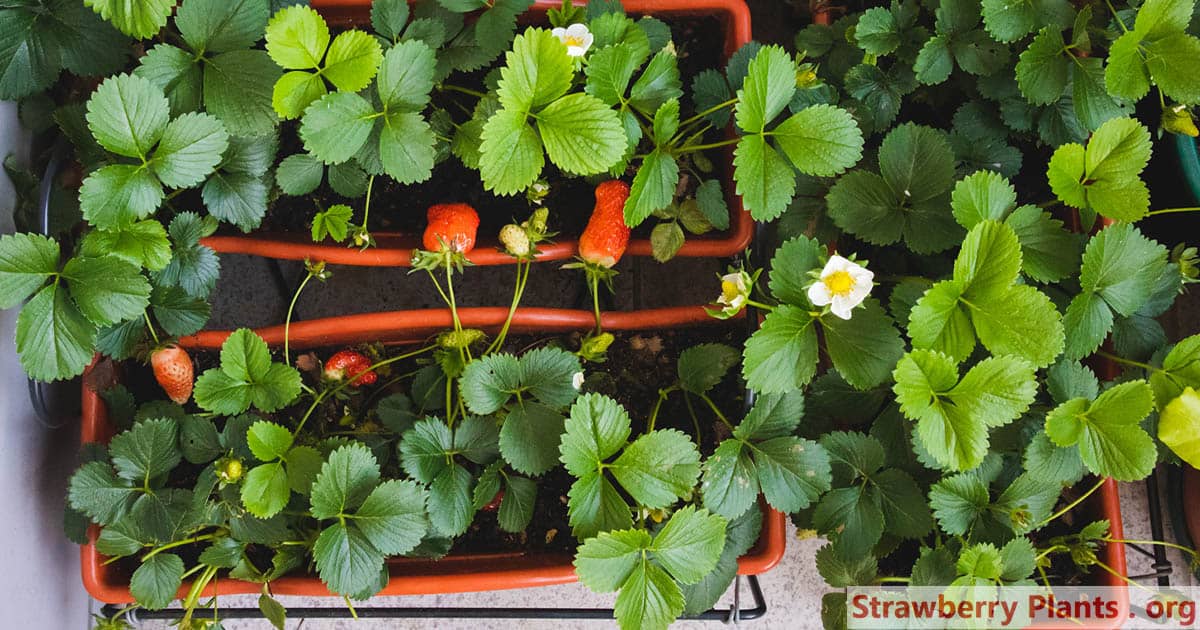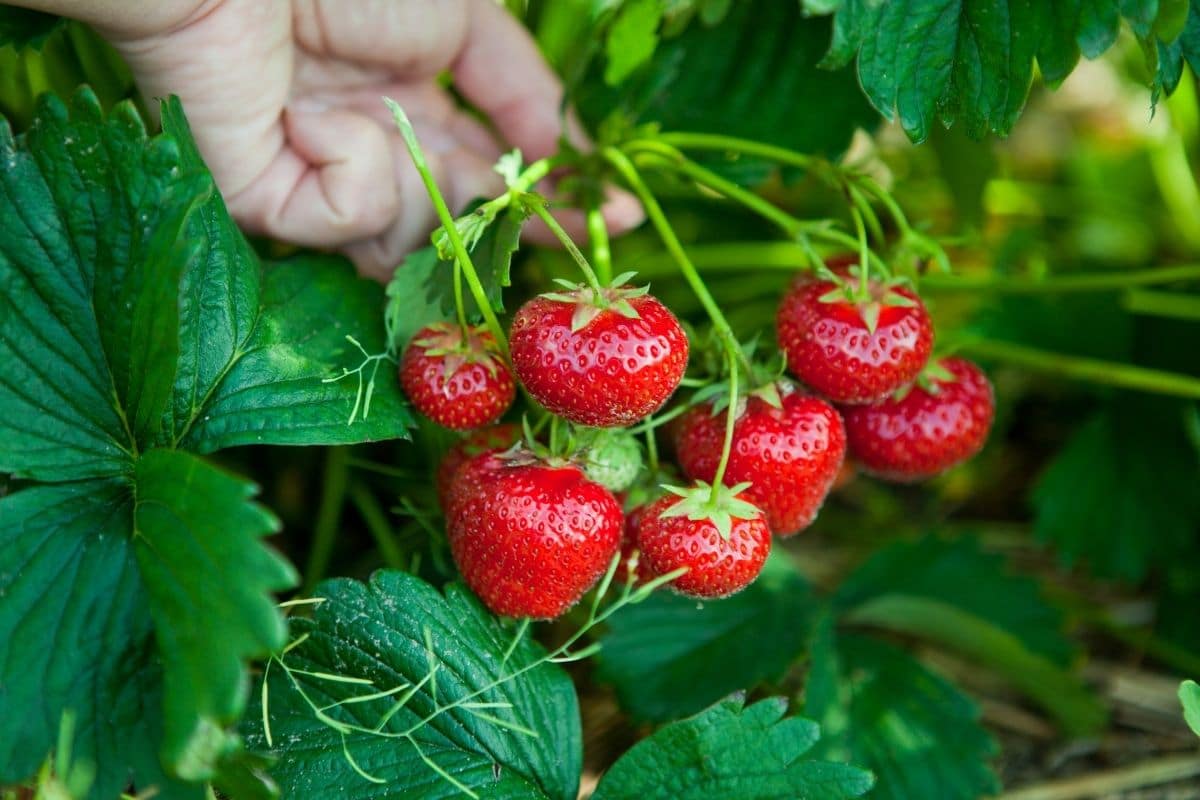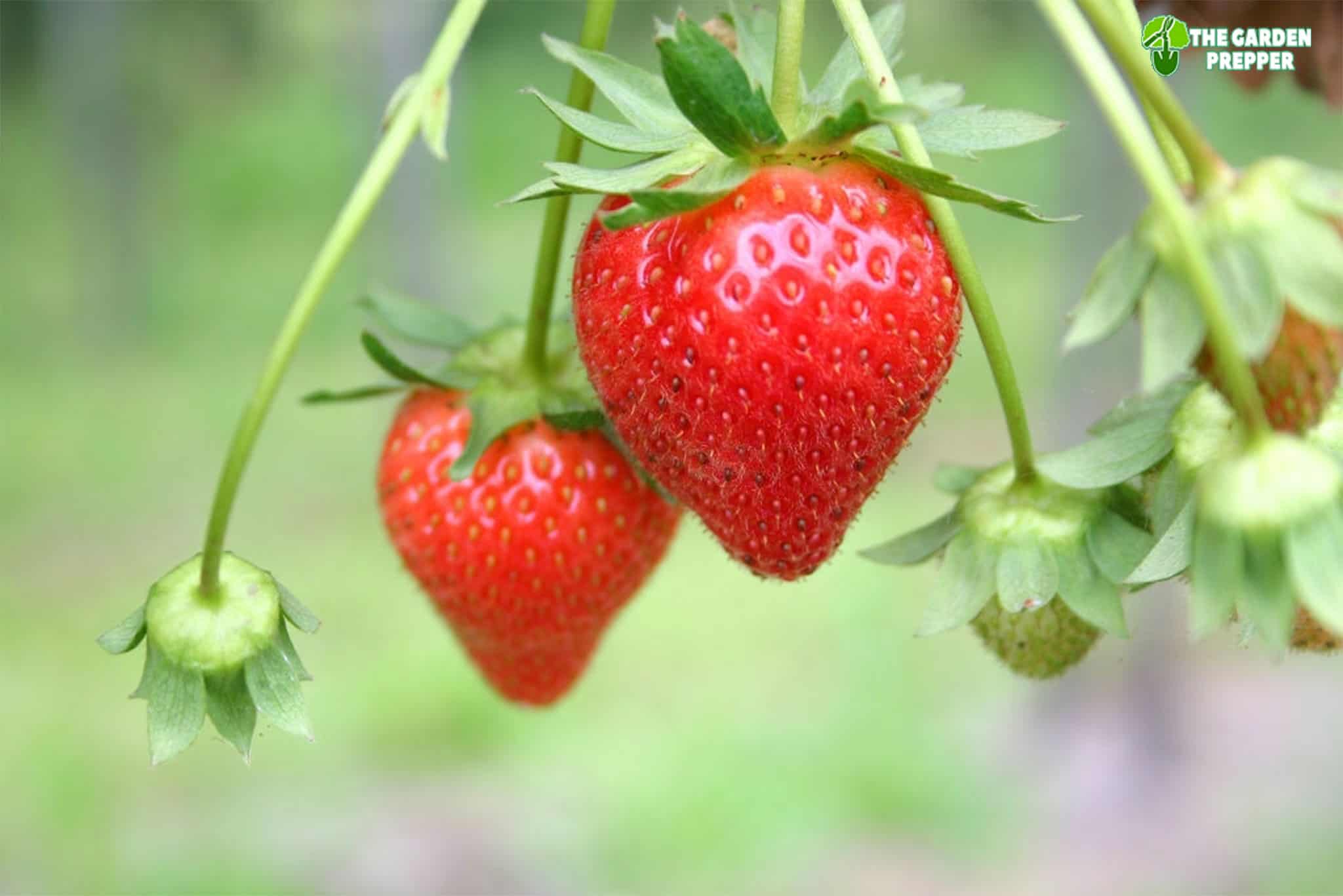Most gardening books say that strawberries need at least eight hours of sunshine every day to grow well, but the truth is that they can handle some shade, but not full shade. [feast_advanced_jump_to].
As a berry lover, nothing beats the sweet, juicy flavor of ripe, red strawberries fresh from the garden. Before you start planting though, it’s important to understand strawberries’ light requirements. Getting enough sunlight is crucial for robust strawberry plants and abundant fruit production. But just how much sun do strawberry plants need? Let’s shed some light on optimal sunlight levels.
Why Sunlight Matters
Sunlight, or lack thereof, impacts strawberries in several key ways:
-
Flowering Strawberries produce flowers that get pollinated and then develop into fruit Insufficient sunlight means fewer flowers, and in turn, less fruit
-
Fruit quality: With inadequate sunlight, strawberry fruits often remain small, pale, and less sweet. Direct sun exposure helps fruits fully mature and develop rich flavor.
-
Runner production: Strawberry plants produce runners that form new daughter plants. Less light limits runner growth and reduces plant spread.
-
Winter hardiness: Ample sunlight in fall helps strawberry plants properly harden off for winter. Weak, leggy plants from too little light overwinter poorly.
Getting sunlight right is clearly vital for robust strawberries and bountiful harvests But exactly how much sun should your strawberry patch get?
Recommended Hours of Sunlight
Most strawberry experts recommend the following daily sunlight levels:
- Minimum: 6 hours of direct sun
- Optimal: 10-12 hours of direct sun
- Absolute Maximum: 14 hours of direct sun
With the minimum of 6 daily hours of unfiltered sun, you can expect some modest harvests. But fruit yields will be significantly lower compared to strawberries grown in full sun.
For the highest yields of large, flavorful berries throughout the growing season, aim for the optimal range of 10-12 hours of direct sunlight per day. This gives your strawberries enough sun exposure to really thrive and perform at their peak.
In extremely hot climates, the absolute max threshold of 14 hours prevents excess heat stress on plants. But in most areas, the 10-12 hour range provides an ideal balance for strawberry success.
Sunlight Needs by Strawberry Type
Specific strawberry types have the same basic light requirements. But harvest seasons and productivity can vary:
-
June-bearing: Need full sun to produce a large early summer crop. They yield the highest volumes of fruit per plant when given optimal sunlight.
-
Everbearing: Produce two smaller harvests per season. Still benefit from maximum sunlight levels for better yields.
-
Day-neutrals: Bear light crops of berries all season long. Don’t produce runners well in too much heat, so may do well with just 8 hours of sun in hot regions.
Regardless of strawberry type, always provide the most sun exposure realistically possible in your location and climate. You’ll reap sweeter rewards at harvest time.
Sunlight Needs in Different Regions
The hours of sun your strawberry plants need can also vary slightly depending on your region:
-
Northern areas: Long summer days often provide 10-14 hours of sun naturally. Focus on choosing the sunniest planting site possible.
-
Southern areas: Have shorter days but more intense sunlight. Aim for 8-10 hours of direct sun if possible. Provide some afternoon shade if temperatures regularly exceed 90°F.
-
Coastal areas: Typically have significant morning and evening fog or overcast skies. Try to find a site with maximum midday sun exposure.
-
Mountainous areas: Require a south-facing planting site to maximize sun intake on slopes and in valleys.
Evaluate daylight length, sun intensity, and microclimates in your specific area when planning your berry patch placement.
Providing Enough Sunlight
If your yard offers multiple potential planting sites, select the location receiving the most sun exposure throughout the day. Other sunlight tips:
-
Remove any large trees or buildings casting major shade. Even small amounts of shade can add up over a whole bed.
-
Orient rows on a north-south axis to prevent shading within the bed as the sun moves.
-
Stagger plants in double rows to prevent mutual shading.
-
Gradually thin surrounding plants as your strawberry patch establishes to open up more sunlight space.
-
Use reflective plastic mulch to bounce additional light onto plants if bare ground sun hours seem marginal.
With a little planning and strategic adjustments, you can maximize sunlight for your strawberries. Just give your plants as much full sun access as realistically possible. Then get ready to pluck pints of plump, juicy, sun-ripened berries.
The Takeaway
There’s no getting around it – strawberries and sunlight go hand in hand. Strawberries perform best and produce the heaviest fruit yields when grown in full sun. While they can tolerate partial shade, optimal fruiting requires 10-12 hours of direct sunlight per day. Before planting your patch, carefully consider sunlight patterns. Then choose the sunniest available location and remove any potential shade hazards. With abundant light fueling growth, your strawberries will reward you with a bountiful berry bonanza.
How Much Shade Can Strawberries Tolerate?
For strawberries to grow big, tasty fruit every day, they need at least five hours of direct sunlight. It’s possible for strawberry flowers to bloom in even less light, but the strawberries they make will be small, wet, and sour.
Dr. Hyo Gil Choi at Kongju University in South Korea studied the light requirements of strawberries grown in the winter in greenhouses with different amounts of sun exposure. He left some strawberry plants completely shaded by curtains until 10 o’clock every morning, some strawberry plants completely shaded by curtains until noon, and some strawberry plants completely shaded by curtains until 2 o’clock in the afternoon. He also had strawberry plants he allowed to receive full sunshine.
In this part of Korea, the sun rises around 7 a.m. and goes down before 5 p.m. This means that the strawberry plants received 10, seven, five, or three hours of sun every day. Any amount of sunlight, even three hours a day, is better for the strawberry plants than none at all.
Dr. Choi discovered that the strawberry plants that received the least light made the most chlorophyll. They had unusually dark-green leaves. It was as if they were trying extra hard to use all the sunlight they received.
The Korean researcher also found that berries grown in different light conditions were very different in size and sugar content, but not in how acidic they were. The strawberries grown with just three hours of sun every day were small and tart. The strawberries grown in full sunlight were bigger and had greater sugar content.
Here is a summary of his results:
- Strawberry plants that got full sun were about 50% bigger than strawberry plants that got little light.
- Strawberry plants that got the most shade had four times as many “tiny” strawberries (less than 10 grams, or 1/3 of an ounce) as plants that got full sun.
- Strawberry plants that got full sun had up to 50% more fructose, glucose, and sucrose sugars than strawberry plants that got the least shade.
- Strawberry plants that were in the shade had the same amount of acetic acid (the acid in vinegar) as strawberry plants that were in the sun. They had strawberry tartness without the full strawberry sweetness.
Dr. Choi’s findings confirm what a lot of home gardeners already know. Strawberries grown in shade are small and tart. That doesn’t mean you shouldn’t grow them; it just means you should expect them to be different sizes and tastes.

Can Strawberries Grow in Total Shade?
It’s not hard to find photos and videos of strawberry plants growing in total shade under fruit trees. If you plant strawberries in well-drained, highly fertilized soil that doesn’t have any weeds, they can grow dense, dark green leaves even if they don’t get any direct sunlight.
Strawberries grown in complete shade often have unusually large leaves. They even made a few flowers. Not many strawberries, though, will actually bear fruit until the sun is high enough that plants even those that are growing under trees get several hours of sunlight every day.

On the other hand, strawberry plants grown in greenhouses in sunny desert places like Arizona and the central part of Southern California need shade every day to keep them from getting sunburned. In these locations, it may be impossible to keep strawberry plants going through the entire summer. Around the first week of summer, light and heat prove to be too much for these strawberry plants.
Not only does having the right amount of sun and shade help strawberries grow well, but it also makes the leaves look nice.
How Much Sun Do Strawberry Plants Need?
FAQ
Can strawberry plants grow in shade?
Can strawberries get too much sun?
Do strawberries prefer morning or afternoon sun?
Should I water strawberries every day?
How much sun do Strawberries need?
Strawberries thrive in full sun, which means they require at least 6-8 hours of direct sunlight daily. The quality and sweetness of the fruit can be largely attributed to the abundance of sunshine. Soil is another critical element; strawberries prefer well-drained, loamy soil rich in organic matter.
Can strawberries grow in Sun?
Cultivated strawberries are full-sun plants that struggle to grow properly if they’re left in the shadows. Although they are low-growing and often used as ground cover, strawberry plants fruit best with direct sun exposure.
Can strawberries grow in the shade?
Well, Strawberries can grow in the shade, as not all gardens receive full sunlight throughout the day. While strawberries prefer full sunlight, they can grow and produce fruit in partial shade. A strawberry plant needs direct sunlight for at least 6 hours. However, if the plants receive less sunlight, they will produce fewer and smaller fruits.
Why do Strawberries need more sunlight?
Cultivated strawberries require more sunlight because the berries are large and produced in large quantities. Sun exposure directly impacts when and how the plants flower and fruit. Without sufficient light, these low-growing berries cannot produce enough energy in their leaves to maintain healthy foliage, roots, and fruits.
- The Ultimate Guide to Growing Strawberries in Raised Beds - August 8, 2025
- No-Dig Garden Beds: The Easiest Way to Grow a Beautiful Garden - August 6, 2025
- How to Protect and Preserve Wood for Raised Garden Beds - August 6, 2025

